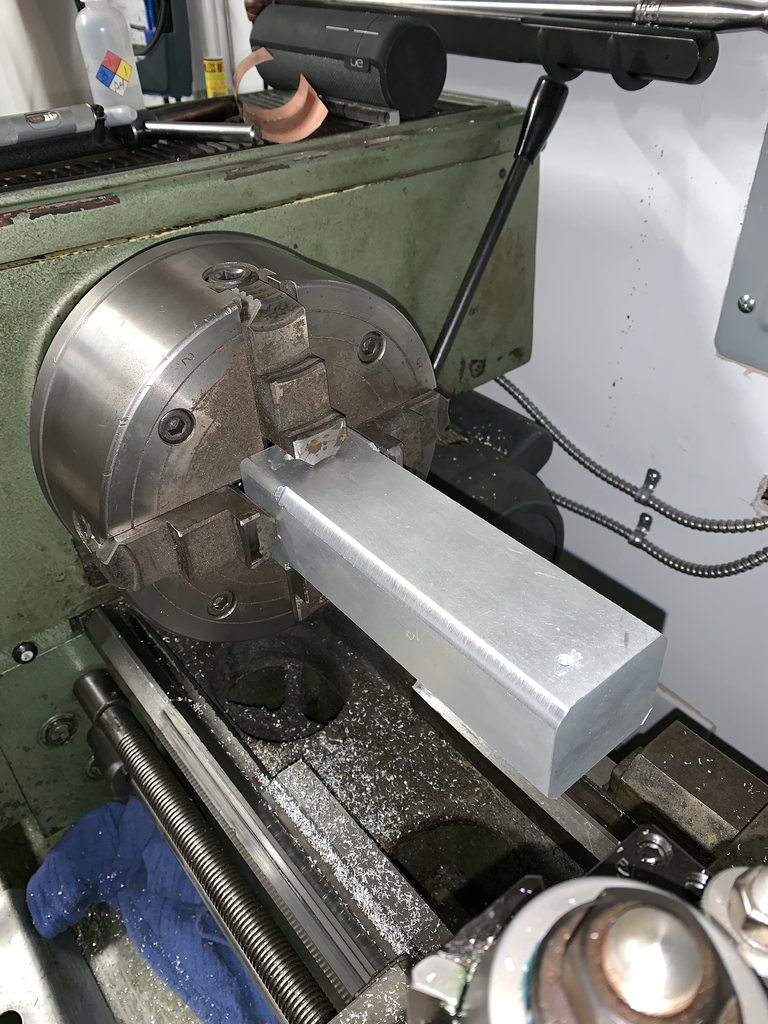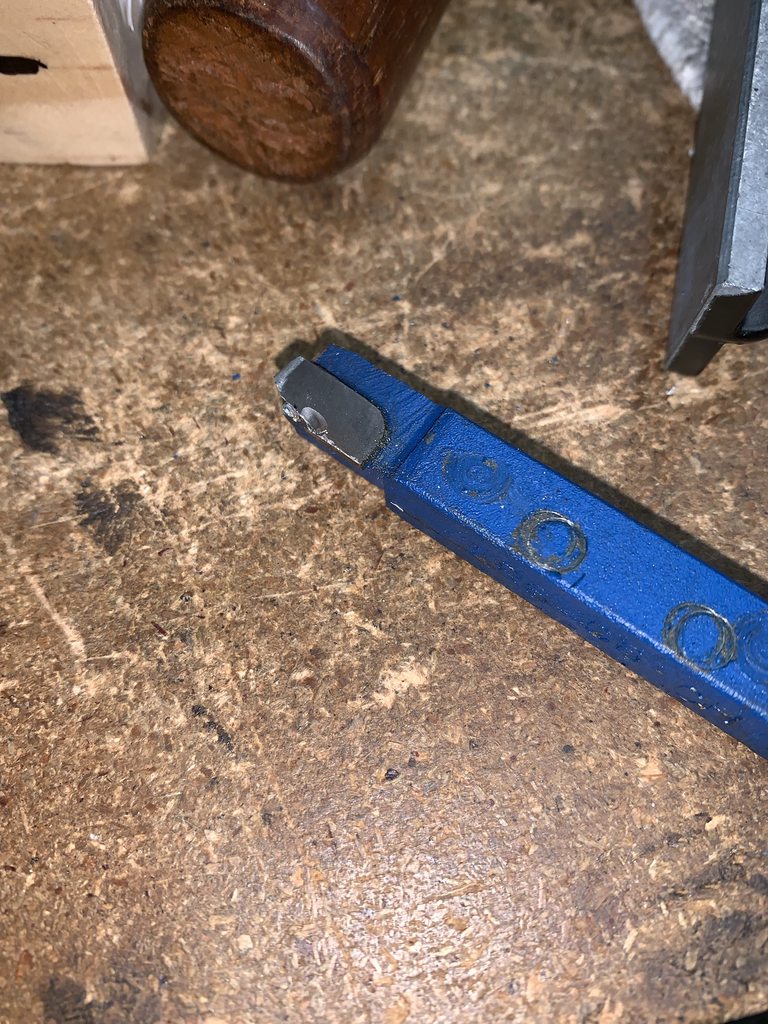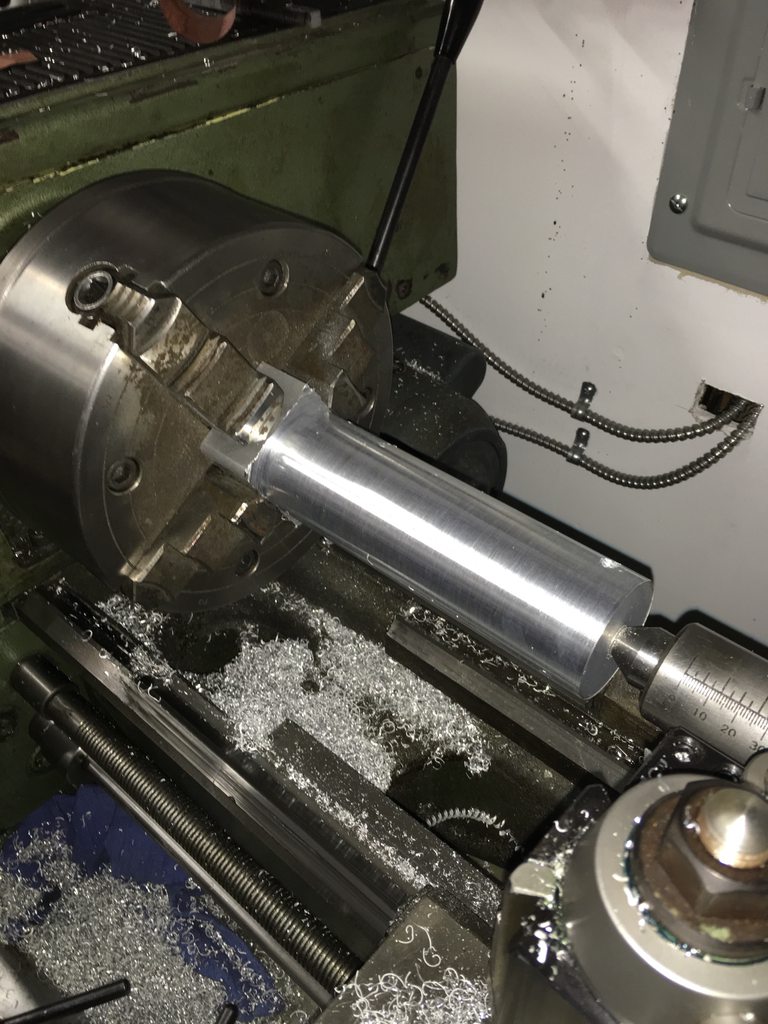Well, I don't have a round bar that is as big as the quill of the tailstock, but I do have a rectangular block of aluminum that is larger in its smallest width than the quill is wide. I chucked the rectangular block in the chuck and started to use the feed control to make the cut with my carbide cutter. I don't know what happened but when I reached for the clutch to disengage the feed, it either jammed, or I pushed it the wrong way, or I grabbed the wrong lever, or something, but it didn't disengage. I hit the chuck and sparks flew. I was using the slowest feed possible. Luckily, since its a belt drive and the belt is somewhat loose, the motor spun but the belt slipped which stopped the gears from turning.
The carbide cutter broke and the chuck stopped. I cut power somehow managed to break everything loose. I thought for sure I buggered up some gears or something. Looks like the worst I did was break the cutter. Luckily for me, I had just bought some new carbide bits (the kind you can replace the tips) and I put in a new bit.
This time, I rehearsed engaging and disengaging the clutch. A new habit for me; when running the feed, never take your hand off the clutch. I continued cutting and am about half way to making a round bar out of a rectangular bar. Just for safety's sake, I would disengage the clutch a couple of times throughout the pass to make sure it wasn't going to jam on me before I got any closer to the chuck.
OOPS!
I'll finish turning the block tonight. That was just how I spent my lunch hour today. My heart rate is settled down a bit now. And yes, I was wearing safety glasses.
Tony.




